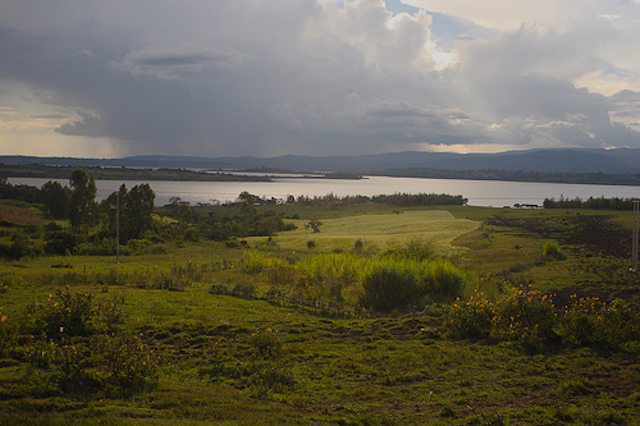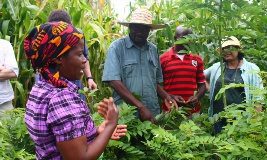
Farmers, ecosystems, and societies around the world all benefit by adopting sustainable agroforestry methods. Doing so conserves and enhances soils, water resources and livelihoods while taking in and storing carbon.
Forest clearing for agriculture is a major driver of deforestation, ecosystems destruction, natural resources degradation and loss of biodiversity, primarily in developing and less developed countries.
The World Bank’s BioCarbon Fund Initiative for Sustainable Forest Landscapes has developed a methodology for accounting for carbon emissions across diverse landscapes, the first of its kind. “A landscape is more than the sum of its parts. It may have forests, water resources, farms. Healthy forests and fertile landscapes improve and create livelihoods…
“Climate-smart approaches to reducing emissions from forestry, agriculture and energy, among other sectors, have the greatest potential to improve sustainable livelihoods while limiting the impacts of climate change,” World Bank highlights.
Measuring and accounting for carbon emissions reductions across diverse landscapes
Devising the means and mechanisms via which farmers and ranchers can be paid to adopt landscape-scale, climate-smart agroforestry practices poses a grand challenge. To start, farmers and ranchers have to be able to systematically measure emissions reductions across a landscape in a straightforward, practical way. They can then be compensated based on results, BioCarbon Fund points out.
The BioCarbon Fund’s Initiative for Sustainable Forest Landscapes’ (ISFL) carbon and greenhouse gas emissions reductions accounting methodology does just that, adding a powerful tool to the sustainable forestry and agriculture initiatives it carries out in developing, less developed, and the least developed countries worldwide.
A multilateral agency program, ISFL promotes and rewards holistic land management methods and practices that reduce greenhouse gas emissions and increase carbon sequestration. That includes the UN REDD+ (Reducing Emissions from Deforestation and forest Degradation) program, as well as implementation of climate-smart agriculture and land use planning and policies.
Guiding principles and national carbon accounting for landscapes
 Alleviating poverty and unsustainable land use are two other ISFL focal points and goals. The multilateral agency program will carry out “pilot programs and interventions at a jurisdictional scale in order to test approaches and share lessons learned broadly,” it explains.
Alleviating poverty and unsustainable land use are two other ISFL focal points and goals. The multilateral agency program will carry out “pilot programs and interventions at a jurisdictional scale in order to test approaches and share lessons learned broadly,” it explains.
ISFL’s efforts are guided and informed by four principal design elements:
- Working at Scale: Each ISFL program focuses on an entire jurisdiction (state, province, or region) within a country and enables programs to engage with multiple sectors affecting land use, increasing their impact over a relatively large area.
- Leveraging Partnerships: The ISFL will create partnerships with other public sector initiatives and private sector actors. Engagements with the private sector can take several forms, from collaborating on sustainability approaches to blending finance in-country, to convening stakeholders to work toward complementary goals.
- Incentivizing Results: The ISFL will provide significant results-based climate finance over a 10-15-year period by purchasing verified emission reductions.
- Building on Experience: To work at scale effectively, the ISFL builds on the experiences and lessons learned by the BioCarbon Fund’s initial work piloting land use projects, the national
- REDD+ readiness work of the Forest Carbon Partnership Facility (FCPF) and the United Nations REDD Programme (UN-REDD), and other land use initiatives.
Many of the countries home to the world’s vanishing tropical forests have improved their capacity to measure, report and account for forestry-sector emissions reductions, BioCarbon Fund and ISFL note. That said, many are challenged to do similarly across other sectors. ISFL built a phased approach to its nation-specific emission reductions accounting methodology and program requirements to address this.
As ISFL explains: “This approach allows a country to begin accounting, and receiving payments, for emission reductions from a limited set of land use categories that meet ISFL requirements. Countries can then add data from other sectors into their ISFL accounting, and receive payments for emission reductions from these sectors, as they become available.”
*Images credit: World Bank BioCarbon Fund, ISFL


